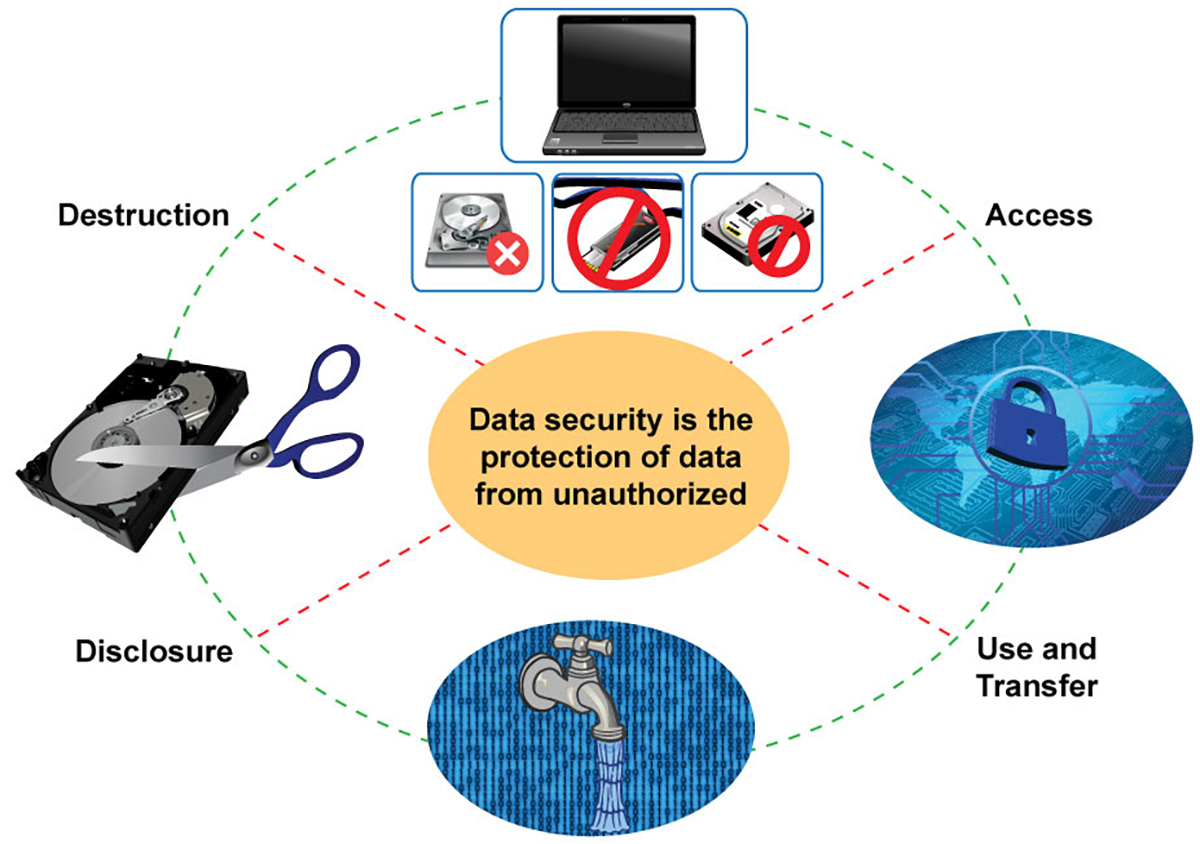Leading Tips for Ensuring Secure Data Destruction in Your Cyber Security Plan
Leading Tips for Ensuring Secure Data Destruction in Your Cyber Security Plan
Blog Article
Exploring the Value of Information Destruction in the Context of Computer System Protection Solutions and Protecting Confidential Information
In an age where data breaches are increasingly common, the importance of effective information devastation can not be overemphasized. What methods can companies implement to improve their data damage protocols?
Recognizing Data Devastation
Data destruction is a vital component of computer system security that includes the irreversible elimination of information from storage gadgets to stop unauthorized gain access to and prospective data breaches. In a progressively electronic landscape, organizations deal with increased threats linked with delicate information being improperly accessed or made use of. Efficient data damage safeguards versus these dangers, making certain that confidential dataâEUR" such as customer information, intellectual residential or commercial property, and monetary recordsâEUR" can not be recuperated after disposal.
Comprehending the value of information devastation prolongs past plain compliance with lawful and regulative structures; it is necessary for preserving organizational honesty and trust. When data is poorly taken care of or improperly ruined, the repercussions can be serious, including financial loss, reputational damages, and lawful responsibilities.

Techniques of Data Elimination
One prevalent method is information cleaning, which includes overwriting existing data with random patterns numerous times. This strategy makes the original information irretrievable, making it a prominent option for organizations seeking to secure secret information.
An additional method is degaussing, which uses a powerful magnetic field to disrupt the magnetic domains on storage space tools, properly removing the data. This approach is particularly effective for magnetic media but is not suitable to solid-state drives.
Physical damage is one more robust method, squashing or entailing the shredding of storage space gadgets. This technique assurances that data recovery is practically impossible, making it excellent for highly sensitive info.
Last but not least, encryption can work as a complementary approach to information obliteration. By securing data before removal, organizations can add an additional layer of security, ensuring that also if remnants are recovered, they remain hard to reach without the decryption key. Each approach ought to be selected based upon the degree of information level of sensitivity and the particular safety and security requirements of the company.
Legal Conformity and Data Security
Organizations must navigate an intricate landscape of lawful demands associated with data protection, particularly after applying approaches of data obliteration. Numerous guidelines, such as the General Data Defense Guideline (GDPR) and the Health Insurance Coverage Portability and Responsibility Act (HIPAA), enforce stringent guidelines on just how organizations should dispose and manage of sensitive data. Failing to adhere to these policies can cause significant legal effects, including considerable penalties and reputational damage.
Information destruction processes should be diligently documented to demonstrate conformity with applicable laws and criteria. This documentation not only works as proof of adherence to legal commitments yet likewise highlights a dedication to safeguarding sensitive information. Organizations ought to also establish clear policies pertaining to information retention and devastation timelines, ensuring that data is not held longer than required.

Additionally, routine audits and analyses of information damage techniques are necessary to keep conformity and adapt to developing legal frameworks right here (data destruction). By proactively attending to lawful needs, organizations can alleviate risks connected with information breaches and click to find out more demonstrate their commitment to data safety. Ultimately, prioritizing legal conformity in information damage procedures is not simply a governing responsibility, however a fundamental aspect of a robust information protection approach
Influence On Organization Reputation
The reputation of an organization can be dramatically influenced by its approach to information devastation and monitoring. In today's digital landscape, where data violations can take place anytime, the failure to correctly take care of delicate info can cause extreme consequences. Organizations that improperly handle data devastation risk revealing confidential consumer info, which not just breaches personal privacy legislations however additionally wears down trust fund among customers and stakeholders.
A damaged reputation can lead to lowered client commitment, as clients come to be hesitant to involve with a company that has actually demonstrated oversight in securing their data. Furthermore, unfavorable publicity bordering an information violation can have an enduring result, as prospective clients may be discouraged by the regarded lack of protection. This can cause a straight decrease in earnings and market share.
Moreover, businesses that prioritize data destruction as part of their safety and security approach can boost their track record by showcasing their dedication to safeguarding sensitive info. By taking on strict data administration methods, companies can not just mitigate dangers however also position themselves as credible entities in their corresponding industries, consequently reinforcing their general brand photo.

Ideal Practices for Secure Disposal
Executing ideal techniques for secure disposal of data is important for alleviating threats connected with data violations and ensuring conformity with personal privacy guidelines. Organizations needs to adopt a comprehensive information disposal plan that lays out treatments for both physical and digital information devastation.
For physical information storage space gadgets, such as hard disk drives, shredding or see here degaussing is suggested to prevent data healing. Additionally, companies ought to preserve a chain of guardianship paperwork during the disposal procedure, making sure liability and traceability of disposed products.
For digital data, using software that abides by industry requirements for information cleaning is important. This software program should overwrite existing information numerous times, making recovery practically difficult. It is additionally essential to confirm the performance of the data destruction procedure via audits or third-party assessments.
Educating staff members on secure disposal methods adds one more layer of protection, as human error can typically bring about data exposure. Frequently upgrading and evaluating disposal plans makes certain alignment with progressing regulations and technical advancements. By implementing these best practices, organizations can dramatically lower the threat of unapproved information gain access to and improve their general data security technique.
Final Thought
Finally, data destruction is a fundamental aspect of computer security solutions that makes certain the defense of private info from unauthorized gain access to. Carrying out efficient techniques of data removal, adhering to lawful compliance, and recognizing the influence on company online reputation are essential parts of a thorough information safety and security technique. By adopting ideal methods for protected disposal, companies can promote count on with clients and guard delicate data, ultimately adding to an extra safe digital landscape.
In an age where information breaches are progressively common, the value of reliable information destruction can not be overstated.Information destruction is a vital part of computer system safety that includes the long-term removal of data from storage space gadgets to stop unauthorized accessibility and possible data breaches. Organizations should also develop clear policies regarding information retention and devastation timelines, guaranteeing that data is not held longer than necessary.
By proactively addressing lawful demands, organizations can reduce risks associated with information violations and demonstrate their commitment to data protection (data destruction). Ultimately, focusing on lawful conformity in information destruction processes is not simply a governing obligation, however a basic facet of a robust data safety approach
Report this page